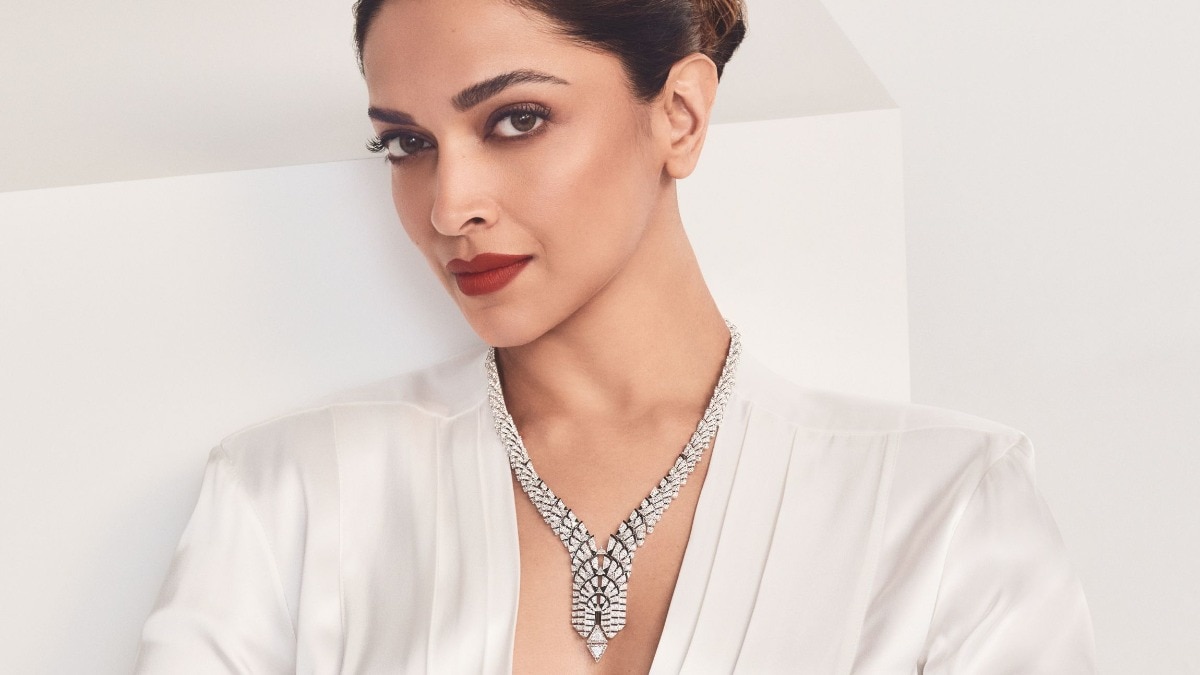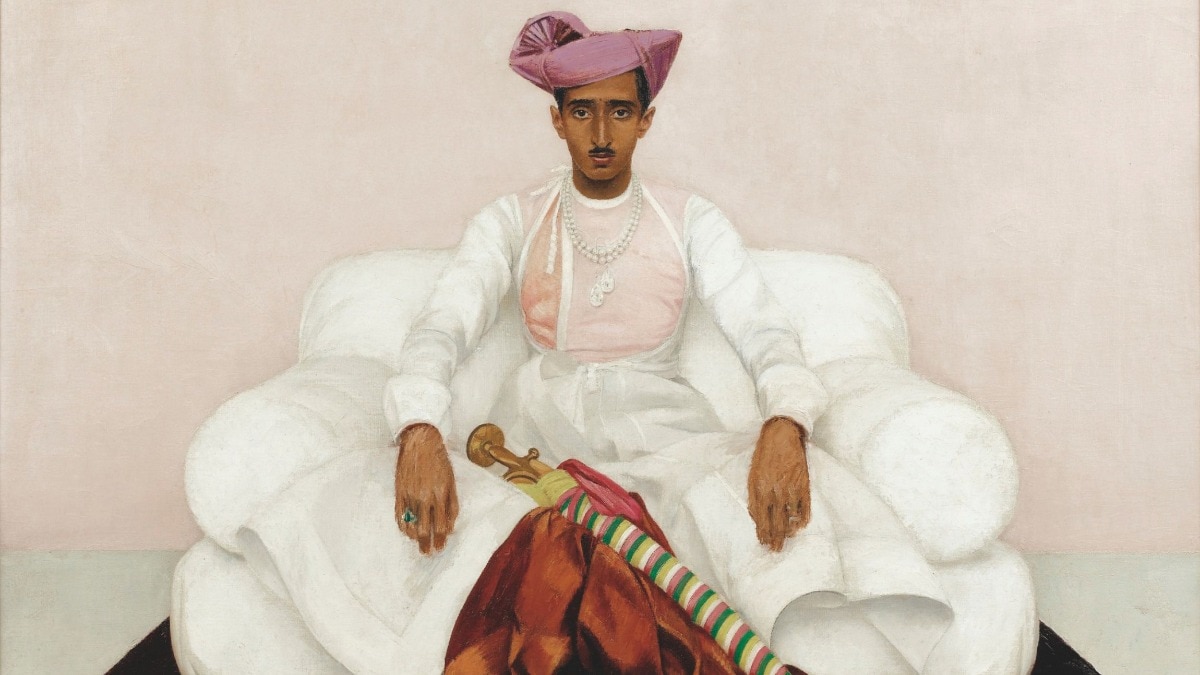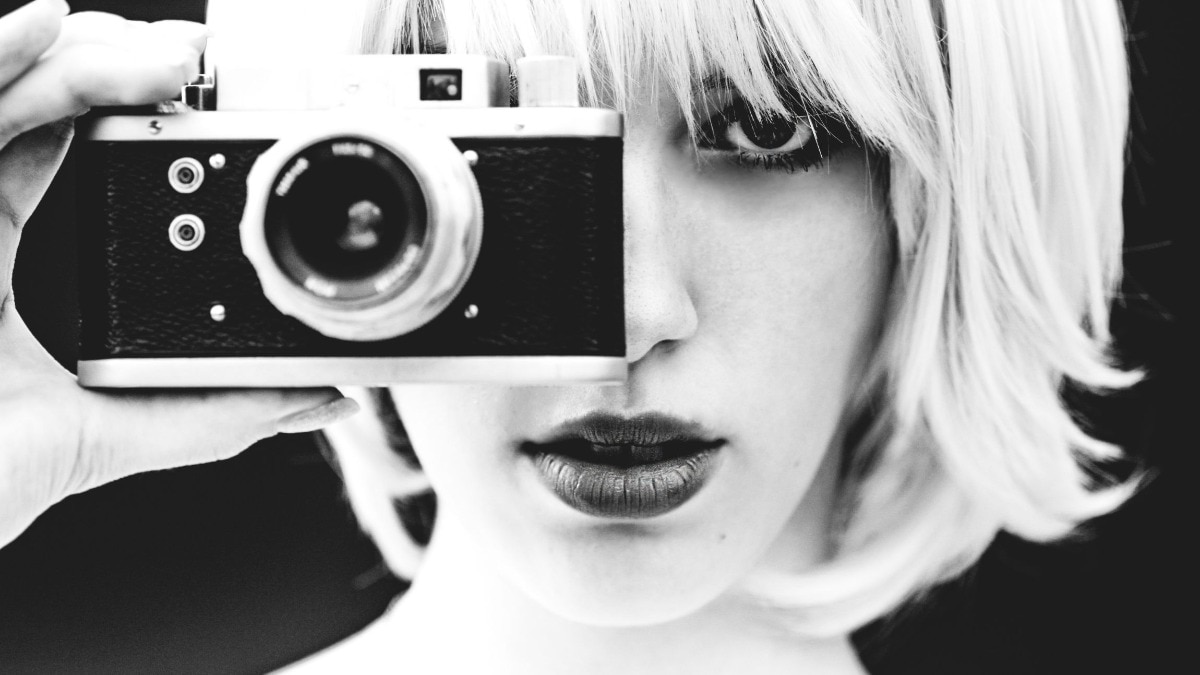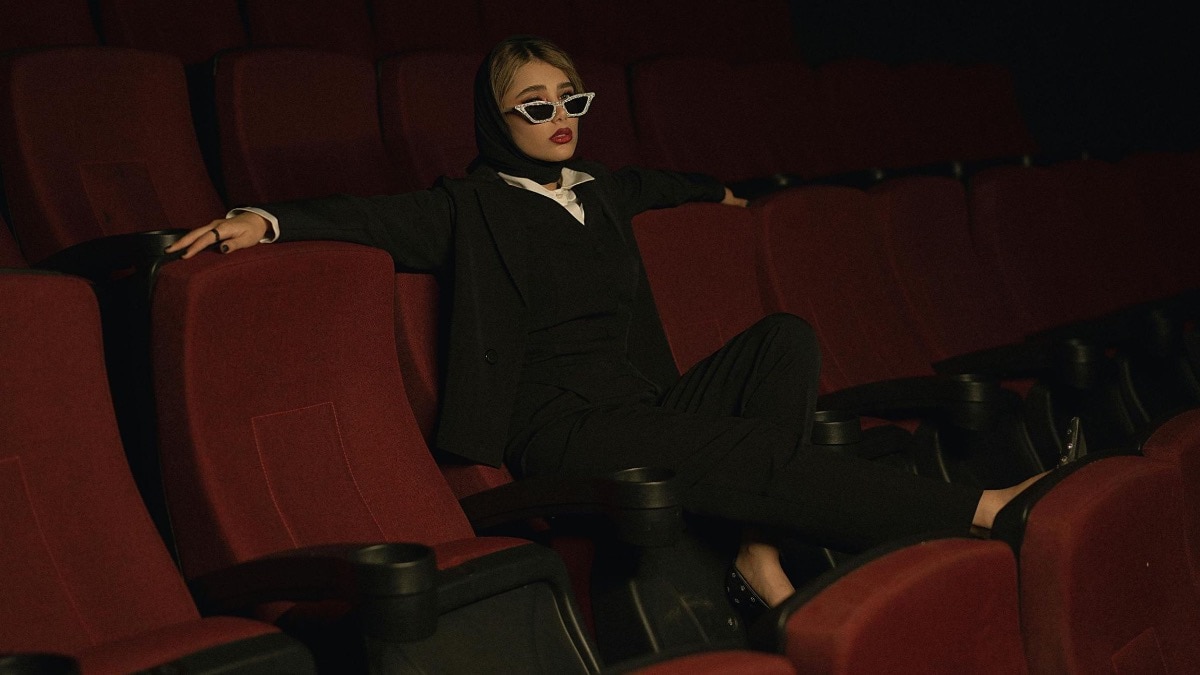Fresh off a stellar NYFW showcase, exclusive tête-à-tête with Bibhu Mohapatra and Jyotika Jhalani on creation and collaboration
Delicate heritage meets harmonious craftsmanship in this coming together of two Indian visionaries.

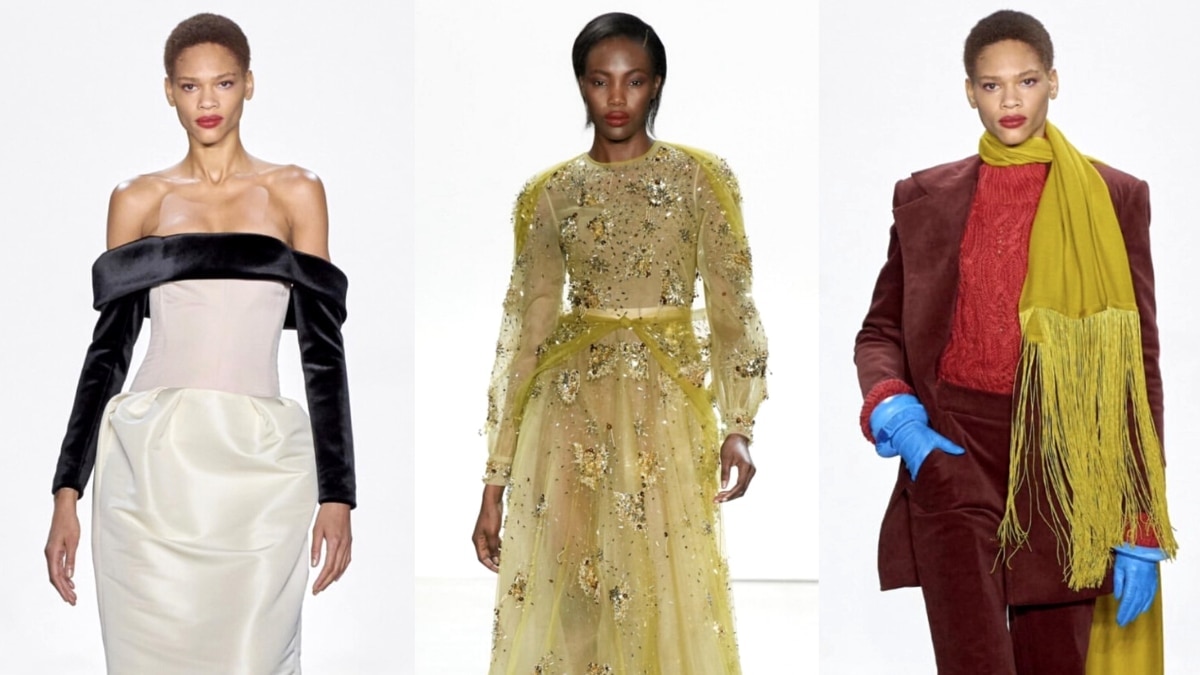
When it comes to fashion, it is often structure, silhouette, elevated movement, and inherent confidence that defines wearability. And at a time where heightened drama and gimmicks on and off the runway can become the most viral form of resonance with people-at-large, deliberate and timeless elegance is the saving grace you pine for (at least I do after severing time on mindless social scrolls)—a rare treat in a cluttered, fast and furious world. This ethereal sensibility therefore becomes non-negotiable, and for designer Bibhu Mohapatra, a form of adjunct routine creativity that he harnesses in each of his collections. This year has been no different for the Indian born, New-York based designer. The big differentiator from his earlier outings at NYFW this year was the mindful collaboration with Jyotika Jhalani (of Janavi India) who has crafted a unique ‘cashmere story’ of her own at a global stage. Scarves met pleats, custom guipure laces, Japanese cady, silk faille, lush corduroy, vegan leather, metallic tweed, embellishments, bangles and gloves with the inclusion of custom developed embroidery designs inspired by art-deco motifs that, handcrafted by Indian artisans.
In a freewheeling conversation with Mohapatra and Jhalani, we talked about the past, present and the future. Here is everything and more you must know of this iconic coming together.
Harper’s Bazaar: A non-conformist who brings a piece of their Indian roots to their design...what was the homegrown element in the Fall Winter lineup this year?
Bibhu Mohapatra: A few of them. In addition to various artisans who worked on the custom-designed embroideries, this season we were so thrilled to collaborate with Janavi India and integrate some of their key designs from the autumn winter collection. A range of beautiful cashmere scarves, embroidered, hand painted, and fringed, all intricately integrated with our fall 23 collection on the runway. This collection is an impactful representation of the homeland, India, and its artisans.
HB: What has your creative process been like in putting together your collection inspired by Nancy Cunard? The African fashion narrative at a global stage has been growing steadily…how keen were you in bringing together various cultural influences to this showcase?
BM: For me, the process of designing a collection is always a balance of creativity and commerce. As I build my business and chart the path for the next decade, it is always so important for me to have a constant source of inspiration that guides me through the process. I believe that I tell stories with my craft, not only my own story, but also the sub-stories of the artists and artisans that often contribute to my creative journey. Nancy Cunard is one such constant muse who always resides in my intellectual library since the day I picked up a copy of her biography, on a voyage from New York to Southhampton, on a Cunard Ocean Liner.
HB: Your mother has remained a huge influence in encouraging your appreciation for craftsmanship and encouraging you to follow your dream at a time it was uncommon to choose a non-academic pursuit. How important is the right environment to fostering creativity?
BM: It is everything. The environment is the real access to opportunities. I am so fortunate that both my parents believed in me at a time when a career in fashion was a path that was way less traveled. My parents were my biggest cheerleaders.
HB: Do you work and function differently in different spaces?
BM: I morph pretty well and adapt to any situation, as long as my focus is on creating for the same Bibhu woman, the muse.
HB: Your collaboration with Janavi is telling of how incredibly important styling, accessorising, and utilitarianism is while putting together a showcase. Were you quite specific about what you wanted through this coming together?
BM: I fell in love with Janavi and its incredible range of products the moment I arrived at the Janavi headquarters in Delhi on a meeting with Jyotika Jhalani. We both felt that we had some sort of a future together. The collaboration during this NYFW collection is one of the first of many chapters.
HB: What inspires you to be relentless in your pursuit of creativity even on days when all odds are against you?
BM: I am a dreamer, I am an immigrant, I hold on to my roots and my childhood, very close to my heart. I know that I am a very fortunate person for all the opportunities I have received, but above all, I am most grateful for the people who have come my way during this incredible journey. So to me, everyday is an opportunity to create and connect. That is a blessing.
HB: Who was the last person you spoke to ahead of this interview?
BM: I spoke to my small but mighty team. I am so proud of them.
HB: How important is model selection and inclusivity been to your showcase over the years? What has been the most noticeable shift for you from the time you made your NYFW debut in 2009?
BM: I have always had a very diverse casting. It was never a deliberate effort to do so. I have always been of the school of thought that diversity is beauty and creativity. That has always kept me curious. Early on I knew that my namesake brand will be for a global audience and with that vision, my collection was always represented by a diverse group of models and team members. I often joke that I am a true United Nations designer.
HB: Another collaboration in the future you would like to explore? How important is it for your brand to embrace technology with the increasing interest in metaverse and NFTs. Do you think it encourages creativity or acts as a deterrent?
BM: Collaborations are the way of the future and are a natural way of learning and expanding ones brand vision. Technology is one aspect that reminds us that any and every brand has to morph and pivot with time. That being said, like any other field, the tech world also has fads and passing fancies. The true sustainability of the NFTs and their resonance with the ever-evolving audience is yet to be verified.
HB: What are you keenly looking forward to in the year ahead?
BM: I look forward to working on the next collections and some interesting and exciting projects on the pipeline.
Harper's Bazaar: You create magic on cashmere with your unique storytelling and the confluence of colours, and now with your capsule collection collaboration with Bibhu Mohapatra, two stars of Indian origin aligned. How did this coming together happen and what's the process of working together been like so far.
Jyotika Jhalani: It's basically the energy of the earth and the force of nature that brought us together. When the time is right, people come together to create more magic. Like you have mentioned, we tell our stories in cashmere and colour.
This is just a continuation of where we are going to go further in our journey.
Bibhu too has a very strong eye for detail, for craftsmanship, and for actually being rooted very much in India, even though he lives in New York and that's his universe. From here it is a starting point of exploring how different minds can put together things and actually create an alchemy or infusion, fashion style, and the ability to create ensembles that can start looking so different from what they were when they started, and yet remain individually, strong.
HB: Mohapatra's muse for the showcase this year had been Nancy Cunard, perhaps fitting when post pandemic resurgence seems to be ushering in experimental 1920's wave at best.
JJ: So as we said earlier, it all happened very, magically. It was almost like somebody had taken a wand and put everything together and, it happened very effortlessly. Bibhu gave us his inspiration, his muse, and somehow it blended well with our collection, which is Janavi 25 years, through the ages.
So there is a lot of interesting play of techniques which somehow matched art deco styles. A lot of layering, a lot of fringes, and also great detail to large motifs. We've also put together a very special ikat range which is very strong alongwith thick cashmere knits and wovens. So the inspiration that Bibhu gave us really ignited our own imagination.
HB: Slow luxury and circular fashion have been and will continue to remain relevant, how does Janavi as a global brand ensure sustainability remains integral to the brand ethos?
JJ: To me, a woman creates her own style, her own ability to portray who she is, and that is what Janavi woman stands for. When you talk about sustainability and being a brand that can continue to remain relevant, I think relevance comes from who you really are and who you project yourself to be. We as a brand have constantly evolved and are are not necessarily a heritage brand. However, we would definitely create brand pieces that would be in your wardrobe and people have worn them for, you know, 10, 15, and 20 years, yet, they still feel new.
So it's not about creating vintage, but it's about creating things that you always would love to have in your wardrobe.
HB: For someone who did not go to fashion school and was spurred to pursue her passion by a supportive family, could you take us back to what early setbacks you might have had and how you powered through them?
JJ: I did start in 1998 when the Pashmina boom was just setting off and, everybody right from women in New York and in London and everybody around Europe wore Pashmina. My idea was to take this Indian Shawl to a different height. It was to make something more relevant. We did design for a lot of international brands and manufactured for them, lace being one of our strongest initially.
So the fact that I did not go to fashion school or I did not have a formal education in fashion helped me build from scratch how I wanted to. And I didn't have any real expectations for myself. There was really no vision or goal when I started. It was just to basically reach for the stars and create something absolutely spectacular and different, and I've slowly achieved that. It was about taking the made in India label to international brands and getting them to endorse it.
HB: We seem to be in a thriving age of unlikely collaborations (e.g.Tiffany X Nike, Balmain X Barbie, etc) which also allows enough room for experimentation. Do you think it's important for brands to take the plunge in order to stay relevant, something you have conscientiously done over the years? What's an unlikely collaboration for Janavi you see in the future?
JJ: So that's an interesting question whether collaborations, partnerships and co-brands are necessary. To me it’s actually a great way of collaborating and showing your strength. We’ve done a few collaborations in the past— Abu Jani Sandeep Khosla, Kiera Chaplin and few more like Suzzane Khan. I think it’s important to know how you are going with your collaborations and associations. Collaborations of all sorts always help and amplify brands to reach higher newer heights and get to a better level of enhancing what they do. Which takes me back to the fact that having another name would only help. And unlikely collaborations would probably be with a car brand or with a sports brand. I guess, 'Never Say Never.'
HB: What's been the biggest takeaway from your collaboration with Mohapatra?
JJ: So my biggest take away is yet to be seen, because this is just the start with our collaboration with Bibhu and what i’ve realised right now is when you build collaborations you build partnerships and you build anything with a similar vision. It's very interesting to see that people have a very similar thought process yet are so different and have mutual respect for one another.
HB: With so much conversation now centred around 'Can women have it all?' with regard to work, life, and family balancing act. What have been your non-negotiable over the years?
JJ: I think they can definitely have it all. Women can really manage their time and their lives way better because they are great at multitasking. For me what was non-negotiable in the initial years was spending time with my family and kids which I stayed pretty focused on. As the years went by, I started realising that time for myself was also important too. So that has become a non-negotiable thing, plus, not compromising on my health and my peace of mind. I used to always just get away and take long retreats as long as three months at a time. I just needed to take care of my mind, body, and soul. And today I think that’s a non-negotiable.
HB: How do you personally center yourself on tough days?
JJ: Chanting. Just sitting sometimes under a tree and breathing. Going away and getting a massage. At times I just go for a swim because water for me is very therapeutic and if I’m really really in the mood, I go and exercise. So these are some real ways of me handling things and sometimes if I really need to chat about something I go and chill with a friend.
HB: What are you most looking forward to in 2023?
JJ: So 2023 is really an exciting year for us because it’s our 25th year and what we really want to do is fun things throughout the year. But the most important thing is that as a brand we are being ourselves together. We are looking forward to a real quantum leap in every respect—in organisation, in scaling upwards, looking at various opportunities of growth, putting in a lot of systems in organisations and building the base. On the design front, I have a lot of new ideas. There is something I am building with the Chamber of Commerce. It’s at the chairpersons of fashion. That’s something I’m really excited about and I am putting together strong fashion bodies, plus, people from different walks of life in both India and Italy. And then we’re flying towards a big immersion towards the end of the year for our 25th anniversay. We’ll talk more about that later!

